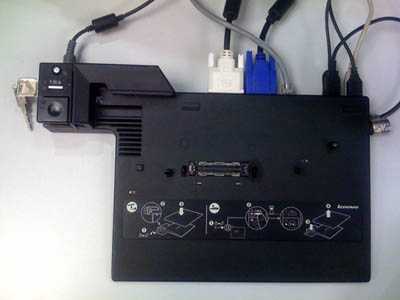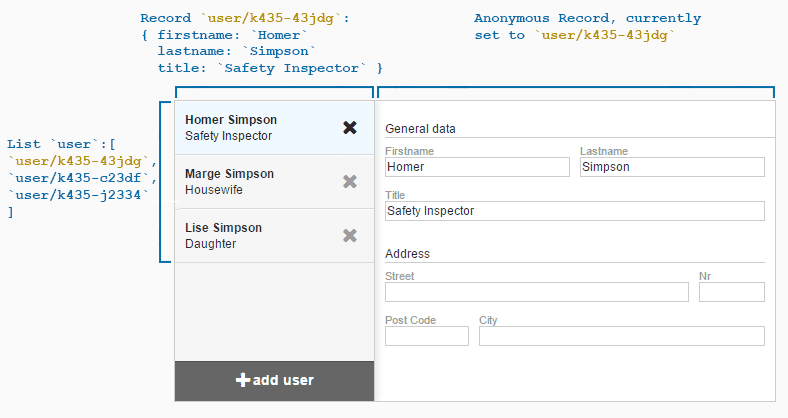Anonymous Records
Learn how to use anonymous records to simplify working with dynamic selections
If you’ve read about records, you know that they are small data objects that can be observed and manipulated. A record lets you store values using .set(), retrieve them via .get() and listen for changes with subscribe().
Anonymous records do exactly the same.
What are anonymous records?
The only difference between a record and an anonymous record is that records have a unique name - but anonymous records don’t. Instead, they have a setName(id) method that lets you change their name.
Conceptionally, an anonymous record is like a shell that wraps around other records. Listeners can be bound to that shell and stay intact while the underlying record changes.
If you ever had to work at a place that believes in hot-desking, you probably know these laptop docks:
They stay connected to the screen, keyboard and power plug etc., but let you switch the laptop that drives them. An anonymous record works pretty much the same way.
What are anonymous records used for?
Anonymous records come in handy if a section of an interface can be used to manipulate different records of a similar type. Take this example app for instance:

Here, each of the Simpsons is a record. The names of all three are stored in a list. The section with the input-fields on the right is powered by a single anonymous record. All input-fields are two-way bound to paths within it.
Now, whenever the user selects one of the Simpsons, the anonymous record’s setName(id) method is called with the recordId of that Simpson. It internally removes all subscriptions to the old record, switches to the new one, re-subscribes, all change-listener fire and the UI is up to date.
How do I create an anonymous record?
By calling client.record.getAnonymousRecord(). The method doesn’t take any arguments.
A few more things worth mentioning:
- All method calls to the anonymous-record, e.g.
delete(),discard(),get()orset()are proxied to the currently underlying record. - The anonymous record emits a
readyevent wheneversetName()is called and the new record is ready - The anonymous record also emits a
nameChangedevent immediately after every call tosetName()

